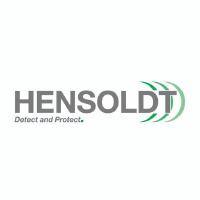Nachrichten |
| Datum / Uhrzeit |
Titel |
Bewertung |
| 24.11.25 11:04:34 |
Die europäischen Verteidigungsmittel fallen, während die USA darauf drängen, dass die Ukraine einen Friedensabkommen |
 |
|
**Haftungsausschluss: Der Text wurde mit Hilfe einer KI zusammengefasst und übersetzt. Für Aussagen aus dem Originaltext wird keine Haftung übernommen!**
**Zusammenfassung:**
Europäische Verteidigungswerte fielen am Montagmorgen, nachdem US-Präsident Donald Trump die Ukraine aufforderte, einen Friedensabkommen mit Russland anzunehmen. In Deutschland sanken die Aktien von Renk um 4,4 %, Rheinmetall um 4 % und Hensoldt um 3 %.
---
Would you like me to:
* Expand on any particular part of the summary?
* Provide alternative phrasing for the translation? |
| 19.11.25 18:30:00 |
Deron wird von der OCCAR eingeladen, Vertrag zu überarbeiten. |
 |
|
**Haftungsausschluss: Der Text wurde mit Hilfe einer KI zusammengefasst und übersetzt. Für Aussagen aus dem Originaltext wird keine Haftung übernommen!**
**Theon International PLC**
**PRESSEMITTEUNG**
Bloomberg (THEON:NA) / Reuters (THEON.AS)
19. November 2025 – Theon Sensors SA, eine vollständig genutzte Tochtergesellschaft von Theon International Plc (THEON), freut sich, bekannt zu geben, dass sie offiziell von der Organisation für Gemeinsame Rüstungszusammenarbeit (OCCAR) gemeinsam mit Hensoldt AG zur Unterzeichnung des ersten Vertragsrevision für ihren bestehenden Auftrag zur Lieferung zusätzlicher fortschrittlicher manövrierfähiger Geräte eingeladen wurde.
Aufgrund der letzten Woche formaler Genehmigungsverfahren durch die beiden teilnehmenden Länder Deutschland und Belgien werden Theon und Hensoldt am 10. Dezember 2025 offiziell die OCCAR Vertragsrevision unterzeichnen, um den Kauf mehrerer Tausend Systeme zu tätigen, was das bestehende Auftragsbestand von Theon erheblich steigern wird. Details der Vertragsrevision werden am Handelsschluss desselben Datums bekannt gegeben.
Für Rückfragen:
Investor Relations
Nikos Malesiotis
E-Mail: ir@theon.com
Medienkontakt
Elli Michou
E-Mail: press@theon.com
Tel: +30 210 6728610
Über den THEON GROUP
Der THEON GROUP von Unternehmen entwickelt und fertigt hochmoderne Nachtsicht- und Wärmebildsysteme für Verteidigungs- und Sicherheitsanwendungen mit einer globalen Präsenz. Der THEON GROUP hat im Jahr 1997 in Griechenland begonnen und nimmt heute dank seiner internationalen Präsenz durch Tochtergesellschaften und Produktionsstätten in Griechenland, Zypern, Deutschland, den Baltischen Staaten, den USA, den Golfstaaten, der Schweiz, Dänemark, Belgien, Singapur und Südkorea eine führende Rolle im Sektor ein. Der THEON GROUP verfügt über mehr als 240.000 Systeme, die von Streitkräften und Spezialeinheiten in 71 Ländern eingesetzt werden, davon sind 26 NATO-Länder. Theon International Plc ist seit Februar 2024 an der Euronext Amsterdam (AMS: THEON) notiert.
www.theon.com |
| 13.11.25 18:24:47 |
Europa mobilisiert Verteidigung um 80 Prozent – das sorgt bei den Investoren für Nervosität. |
 |
|
**Haftungsausschluss: Der Text wurde mit Hilfe einer KI zusammengefasst und übersetzt. Für Aussagen aus dem Originaltext wird keine Haftung übernommen!**
**Zusammenfassung:**
Dieser Artikel erschien ursprünglich auf GuruFocus.
Der europäische Verteidigungssektor erlebte nach einer starken Erholung im ersten Halbjahr eine deutliche Korrektur, nachdem die geopolitischen Spannungen die Stimmung anheizten. Obwohl ein Bloomberg-Index eine Steigerung von 80 % für regionale Verteidigungskonzerne in diesem Jahr verzeichnete, hat sich der Rückenwind verpufft. Investoren ringen mit der Gewinnermittlung, die die frühere Begeisterung nicht widerspiegelt. Schlüsselfiguren wie Rheinmetall haben seit Mitte Juni Seite an Seite gehandelt, und selbst Hensoldt ist seit seinem Oktoberhöhepunkt deutlich gefallen.
Die aktuelle Situation ist durch hohe Bewertungen und überfüllte Positionen gekennzeichnet. Aktien werden mit einem erheblichen Aufschlag (70 %) im Vergleich zum breiteren europäischen Markt gehandelt. Trotz langfristiger Prognosen, einschließlich des NATO-Wunsches nach Verteidigungsausgaben von 3,5 % des BIP und Deutschlands geplanter Erhöhung auf über 160 Milliarden Euro bis 2029, bleiben die Anleger vorsichtig.
Die Gewinnberichterstattung hat den erwarteten Schub nicht geliefert. Während Rheinmetall beruhigende Leitlinien bot, hatte dies keinen spürbaren Effekt, und Leonardo's verbesserte Ergebnisse waren ähnlich wenig beeindruckend. BAE Systems' Handelspolitik war unberechenbar, und Hensoldt's positives drittquartalsbericht war von neuen Zielen überschattet, die wenig Vertrauen erweckten. Kongsberg brach aufgrund schwacher Ergebnisse und einem Plan zur Spaltung seiner maritimen Geschäftsbereiche ein, und Rolls-Royce's Einbruch erfolgte aufgrund seiner Entscheidung, sein Rückkaufprogramm nicht zu verlängern. Nur Saab profitierte von einer überarbeiteten Aufwärts-Verkaufs-Führungsstrategie.
Wichtig ist, dass die Anlegerstimmung stark ausgerichtet ist, wobei 43 % moderat und 14 % erheblich übergewichtet sind. Um das Wachstum wieder anzukurbeln, glauben Analysten, dass Investoren konkretes Beweismaterial benötigen – Gewinnsteigerungen, erhöhte Auftragsvolumina und verbesserte Leitlinien, anstatt lediglich optimistische Versprechungen. Der Sektor scheint in einem Stillstand gefangen und wartet auf konkretes Nachweis des nachhaltigen Erholung. |
| 12.11.25 01:03:46 |
Hensoldt AG – die Zahlen zum Q3 2025 Gewinnkonferenz zeigen einen starken Auftragszuwachs und Umsatzsteigerung. |
 |
|
**Haftungsausschluss: Der Text wurde mit Hilfe einer KI zusammengefasst und übersetzt. Für Aussagen aus dem Originaltext wird keine Haftung übernommen!**
**Zusammenfassung**
Hensoldt AG (HAGHY) hat eine starke Performance für Q3 und Anfang Q4 2025 geliefert, die von steigenden Auftragseingängen und einer soliden Leistung in ihren Schlüsselsegmenten geprägt ist. Das Unternehmen verzeichnete einen Auftragseingang von über 2 Milliarden Euro, ein Anstieg um 9 % im Jahresvergleich, hauptsächlich getragen von Aufträgen im Zusammenhang mit wichtigen Verteidigungsprogrammen wie dem Eurofighter und dem TRML-4D-Radar. Der Umsatz stieg auf 1,5 Milliarden Euro, wobei der Kernumsatz um 14 % wuchs.
Das Buch-zu-Auftrag-Verhältnis (Buch-to-Bill Ratio) erreichte 1,6 bis 1,9-mal, was starke zukünftige Nachfrage signalisiert und die Fähigkeit des Unternehmens unterstreicht, Aufträge zu erfüllen. Das Optronics-Segment entwickelte sich außergewöhnlich gut, mit einem Buch-zu-Auftrag-Verhältnis von 1,4 und einem bemerkenswerten Wachstum des Umsatzes von 27 % in den ersten neun Monaten, was auf sein eigenes Geschäftsmodell hinweist.
Trotz des insgesamt positiven Bildes investiert das Unternehmen stark in die Erweiterung seiner Produktionskapazität, insbesondere 80 Millionen Euro in einer neuen Anlage, die die Produktion von Luftverteidigungsradargeräten ankurbeln soll. Diese Investition ist entscheidend für langfristiges Wachstum und stellt sicher, dass Hensoldt die steigende Nachfrage decken kann.
Ein wichtiges Problem ist jedoch die Cash-Flow-Entwicklung. Der bereinigte Free Cash Flow liegt bei minus 119 Millionen Euro, hauptsächlich aufgrund erheblicher Vorinvestitionen in den Umlaufvermögensbestand, was die Erreichung einer starken Cash-Conversion-Rate aufzeigt. Dieser negative Cash-Flow wird teilweise durch den Logistik-Ramp-up verursacht, der die gesamten Jahreswachstumszahlen vorübergehend beeinträchtigt hat.
Ausblickweise liegt die Umsatzprognose für 2025 bei 2,5 Milliarden Euro, wobei ein EBITDA-Margin von 18 % oder mehr und ein Cash-Conversion-Ziel von 50 % bis 60 % angestrebt werden. Das Unternehmen erwartet eine Nettoverschuldungsquote von rund 1,5-fach. Während das Optronics-Segment für erhebliches Wachstum (mit erwarteten Umsätzen zwischen 420 Millionen und 430 Millionen Euro) positioniert ist, räumt das Unternehmen potenziellen Widrigkeiten, insbesondere dem Einfluss des Logistikzentrums im Q4, der voraussichtlich im Jahr 2026 abnehmen wird, ein.
Strategische Kooperationen sind ebenfalls ein Schwerpunkt, insbesondere mit Leonardo, im Bereich Landplattformen und Luftverteidigung. Der erfolgreiche Luchs II-Vertrag verdeutlicht die Vorteile dieser Partnerschaften, mit dem Potenzial für eine weitere Expansion in den Bereichen Weltraum und Luftverteidigung. Der erhöhte EBITDA-Margin des Optronics-Segments (erwartet 14 % bis Ende des Jahres) deutet auf ein volumenbasiertes Wachstumsmuster statt auf Kostensenkungsmaßnahmen hin.
Das Unternehmen genießt eine solide finanzielle Basis, aber kontinuierliche Investitionen und die Verwaltung des Umlaufvermögens werden entscheidend sein, um ein starkes Wachstum zu sichern und seine ehrgeizigen finanziellen Ziele zu erreichen. |
| 03.11.25 05:09:25 |
Trotzdem ist die Rendite der Anteilseigner über die letzten 5 Jahre mit 813% gestiegen, obwohl Hensoldt (ETR:HAG) in de |
 |
|
**Haftungsausschluss: Der Text wurde mit Hilfe einer KI zusammengefasst und übersetzt. Für Aussagen aus dem Originaltext wird keine Haftung übernommen!**
**Zusammenfassung (ca. 500 Wörter)**
Dieser Artikel untersucht die jüngste Performance von Hensoldt AG (HAG), einem deutschen Aktienunternehmen, und hebt einen deutlichen Rückgang von 19 % innerhalb eines Monats hervor. Trotz dieses Rückgangs betont der Artikel die herausragende langfristige Performance des Unternehmens über fünf Jahre, mit einer beeindruckenden Steigerung des Aktienkurses um 771 %. Der Artikel argumentiert, dass der jüngste Rückgang potenziell nach einer solchen starken Aufwertung verständlich ist.
Die Analyse konzentriert sich darauf, die Faktoren zu verstehen, die dieser Performance zugrunde liegen. Es wird argumentiert, dass Marktreaktionen überreagieren können und dass die Anlegersrationalität nicht immer konsistent ist. Der Vergleich von Gewinn pro Aktie (EPS) mit dem Aktienkurs wird als nützliche Methode zur Bewertung der Marktwahrnehmung dargestellt.
Über den Zeitraum von fünf Jahren des Kurswachstums ging Hensoldt von Verlusten zu Rentabilität über, ein wichtiger Wendepunkt, der oft eine weitere Gewinnsteigerung signalisiert. Die Betrachtung der letzten drei Jahre zeigt einen beeindruckenden Anstieg des Aktienkurses um 308 %, begleitet von einem jährlichen EPS-Wachstum von 3,9 % – deutlich niedriger als die 60-prozentige Aktienkurssteigerung. Dies deutet auf eine Veränderung der Marktstimmung hin, wobei Investoren nun eine positivere Sicht auf das Unternehmen haben.
Der Artikel berücksichtigt auch die Gesamtkapitalisatorrendite (TSR), die Dividenden und Kapitalmaßnahmen berücksichtigt. Hensoldt’s TSR über die letzten fünf Jahre (813 %) übertraf den Aktienkurs-Rückgang und profitierte von Dividendenzahlungen.
Darüber hinaus weist der Artikel darauf hin, dass die Vergütung des CEO unter dem Median für ähnliche Unternehmen liegt, was ein positiver Punkt ist. Es wird empfohlen, das zukünftige Gewinnpotenzial des Unternehmens mit einem kostenlosen interaktiven Bericht zu untersuchen.
Eine einjährige TSR von 196 % (einschließlich Dividenden) zeigt eine jüngste Verbesserung und übertrifft die fünfjährige TSR (56 %). Dies deutet auf positive Entwicklungen in jüngster Zeit hin.
Der Artikel schließt mit der Hervorhebung der Bedeutung von Insiderkäufen als positives Signal und schlägt vor, eine Liste von unterbewerteten Aktien zu erkunden. Es wird nochmals betont, dass die Analyse auf historischen Daten und Analystenprognosen basiert und dass es sich nicht um Finanzberatung handelt. SimplyWallSt hält sich in keiner der genannten Aktien.
|







